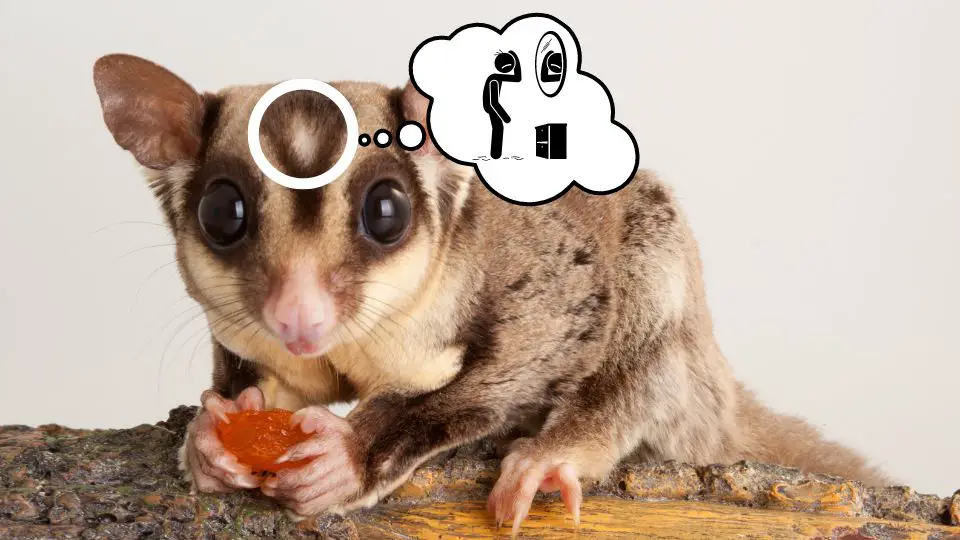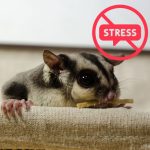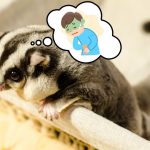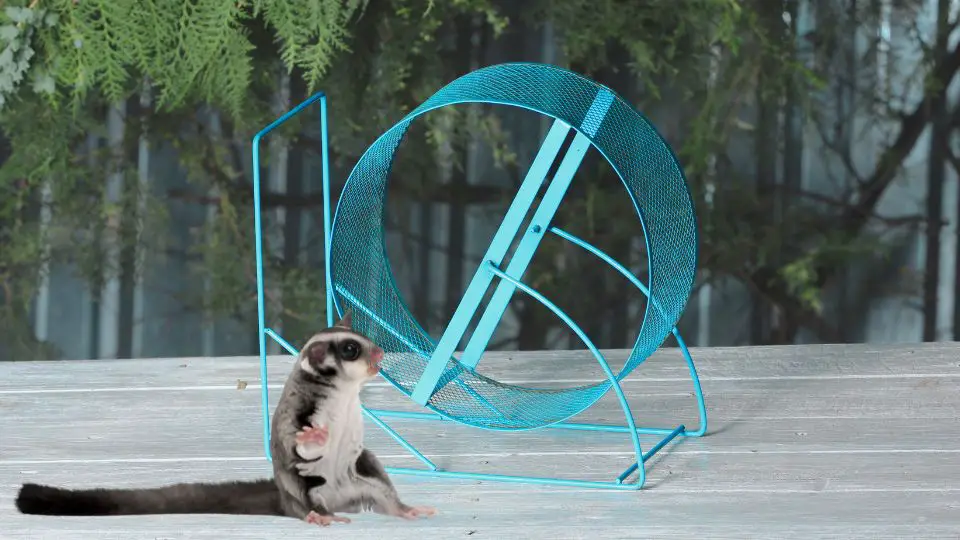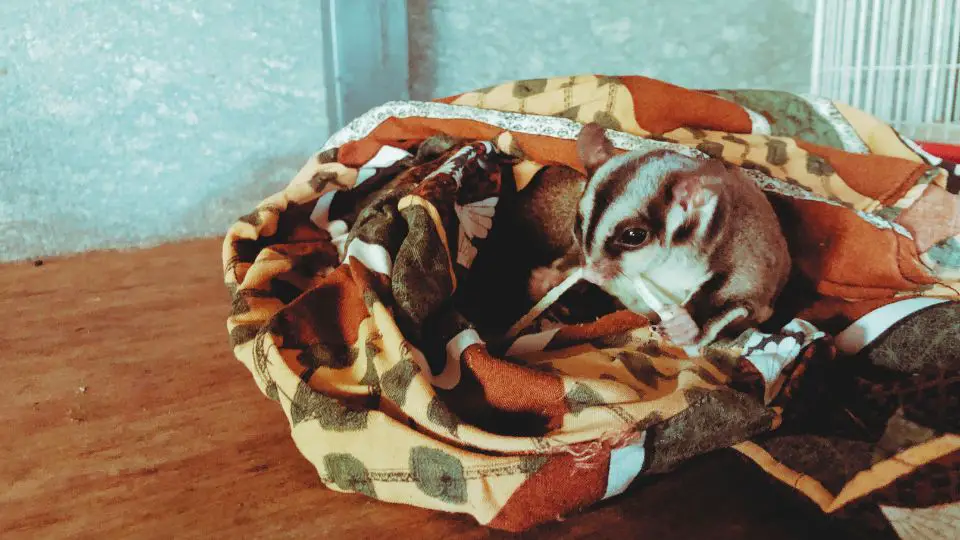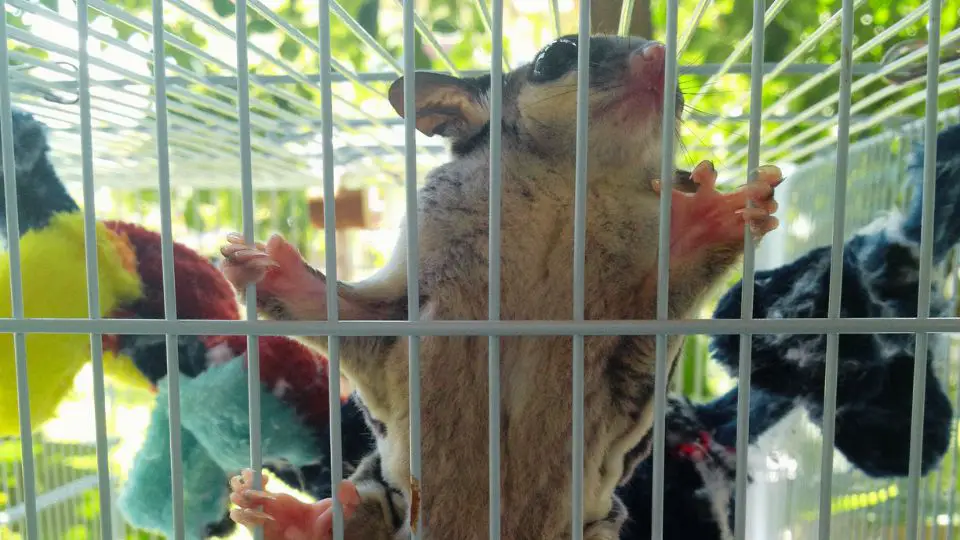Sugar gliders may have bald spots for a variety of reasons. Stress, malnutrition, and even excessive grooming can lead to hair loss and balding in sugar gliders.
Sugar gliders that are not neutered will develop a bald spot on their forehead when they start maturing (at around 8-12 months old). So if this happened, there are no reasons to be concerned.
If you find other bald spots in your sugar glider, or you notice hair loss, it can be a sign of stress. Sugar gliders are very social animals and do not do well when they are alone. If your sugar glider is the only one in the house, he or she may start to self-mutilate or pull out their own fur as a way to cope with the stress.
In this article, we talk about why your sugar glider may have bald spots, what are the reasons why the little pet is losing air and what can you do about it.
Why does my sugar glider have a bald spot?
Overall, a bald spot on a sugar glider is not something to be overly concerned about. There are numerous reasons why your sugar glider may have a bald spot.
The most important thing to do is to observe your sugar glider and see if there are any other changes in their behavior or appearance. If you are concerned, consult with a veterinarian to rule out any medical conditions.
In general, if sugar gliders are not spayed, they are more likely to develop a bald spot on their forehead when they are around 8-12 months old.
Other reasons why your little pet has bald spots can include:
Barbering
The most common reason is due to barbering. Barbering occurs when a sugar glider licks or chews on the fur of another sugar glider.
This can happen for a number of reasons, including stress, boredom, or as a way to groom their mate. If you think your sugar glider may be barbering, try to provide them with more things to keep their minds occupied, like toys and puzzles.
Injury
Another reason your sugar glider may have a bald spot is due to an injury. If your sugar glider has been injured, the fur around the injury may not grow back.
This is especially common if the injury was to the tail. Sugar gliders are very active and agile, so injuries do happen from time to time.
Medical condition
Finally, Sugar gliders can develop bald spots due to medical conditions. Some medical conditions that may cause bald spots include hypothyroidism, alopecia, and fungal infections.
If you think your sugar glider has a medical condition, it’s important to take them to a veterinarian for a proper diagnosis and treatment.
Why is my sugar glider losing hair?
Sugar gliders can lose hair for a number of reasons, this includes:
Age
As sugar gliders age, they can start to lose the hair on their face and body. This is due to a natural process called senescence.
Stress
Stress can also lead to hair loss in sugar gliders. Try to provide your sugar glider with a calm and enriching environment to reduce stress.
Boredom
Boredom can also lead to hair loss, as sugar gliders may start to self-groom more if they are bored and can be a cause of stress. Try to provide them with toys and puzzles to keep their minds occupied.
Injury
If your sugar glider has been injured, the hair around the injury may not grow back.
Mites and Fleas
Mites and fleas are tiny insects that can cause your sugar glider to lose hair. These parasites can also cause your sugar glider to itch and scratch, which can lead to more hair loss.
Diet
A poor diet can also lead to hair loss in sugar gliders. Make sure you are feeding your sugar glider a nutritious diet that includes a variety of fruits, vegetables, and proteins.
Dehydration
Dehydration can also lead to hair loss. Make sure your sugar glider has access to fresh water at all times.
When should I be concerned?
In general, there are no reasons to be concerned about sugar gliders losing hair. It’s important to observe them and look for any other changes in their behavior or appearance.
If your pet is showing signs of stress, anxiety, or illness, you can try to provide them some treats, make sure that they have fresh water, or talk gently to comfort them since they may just want more attention from you.
If you notice your sugar glider is losing a lot of hair, or if the bald spot is getting larger, you can start to be a little concerned and consult with a veterinarian.
Your veterinarian will be able to perform a physical examination and run some tests to determine the cause of the hair loss. They will also be able to provide you with treatment options if a medical condition is found.
Wrap up
There are a number of reasons why your sugar glider may have bald spots. The most common reason is due to barbering, which is when a sugar glider licks or chews on the fur of another sugar glider. This can happen for a number of reasons, including stress, boredom, or as a way to groom their mate.
Also, keep in mind that it is normal for male gliders that are not neutered to develop a bald spot on their forehead when they are maturing.

